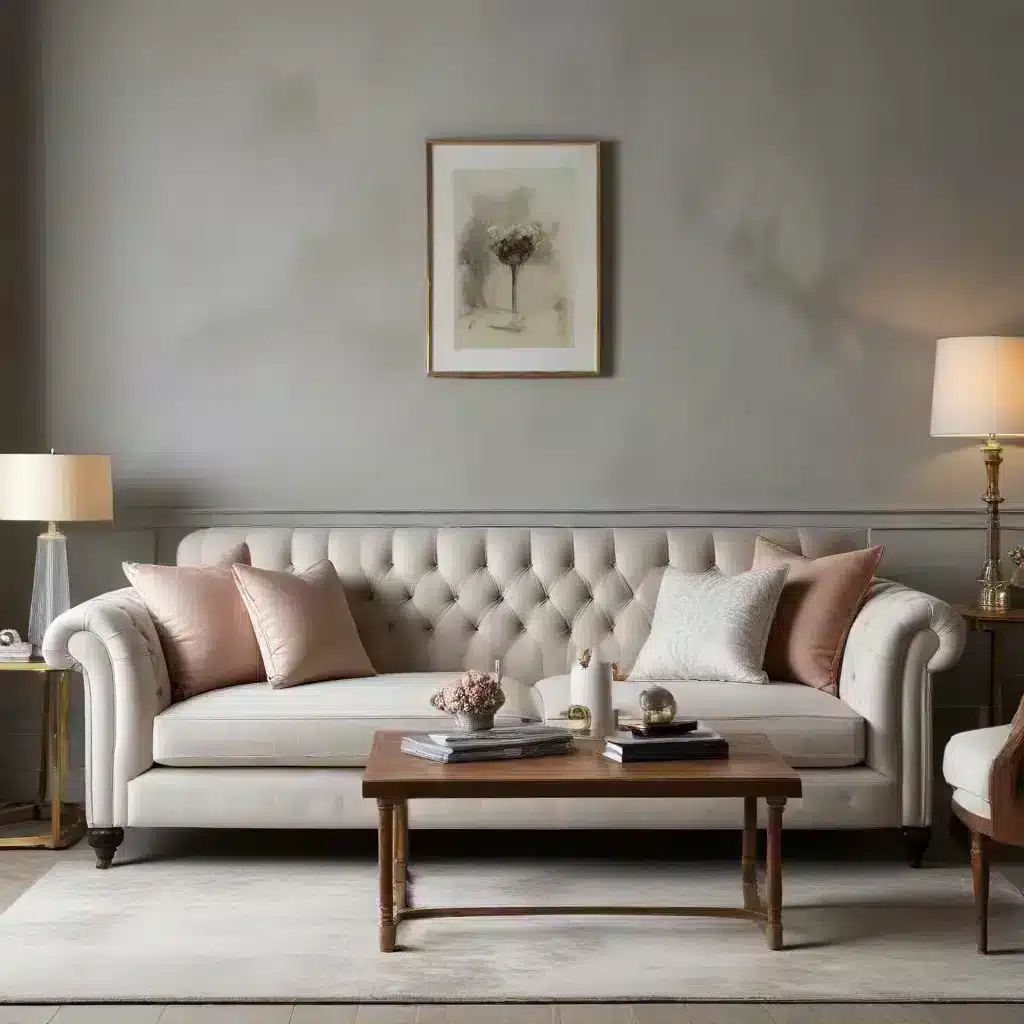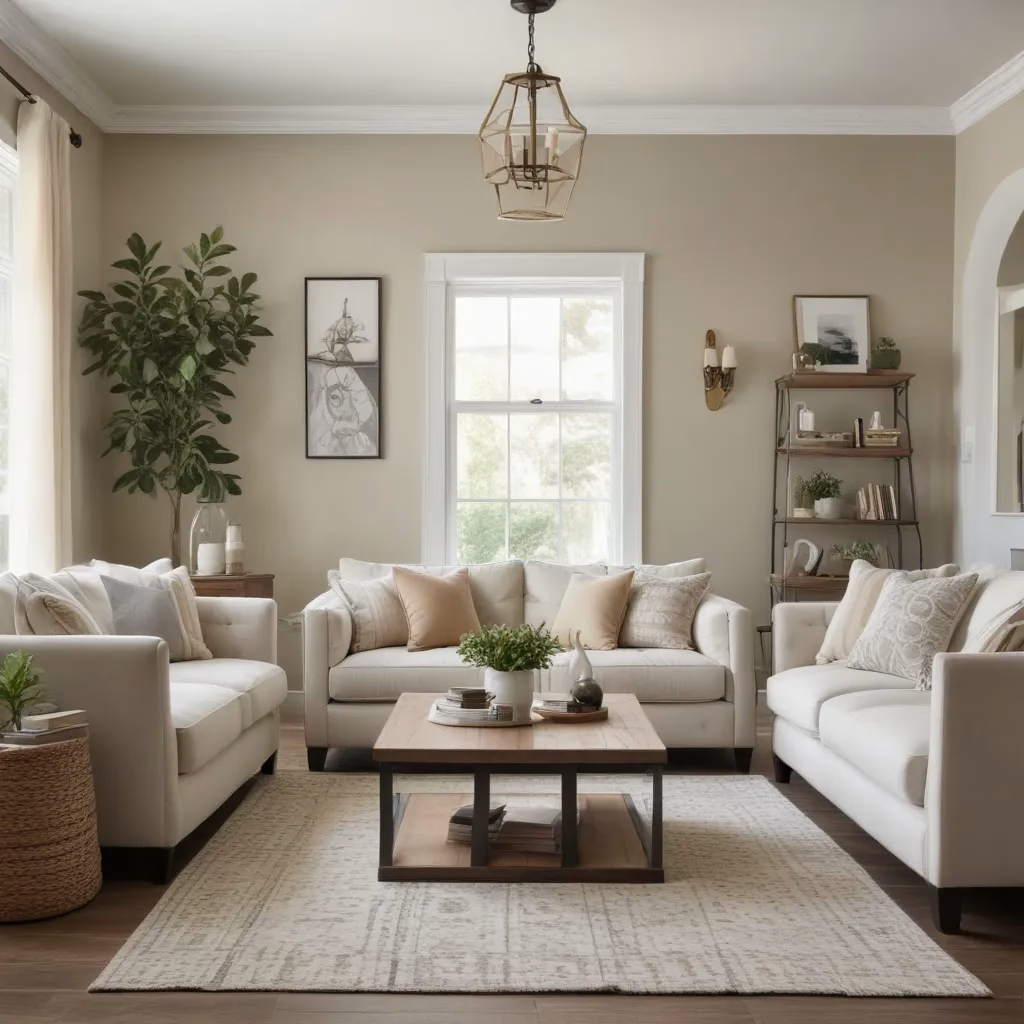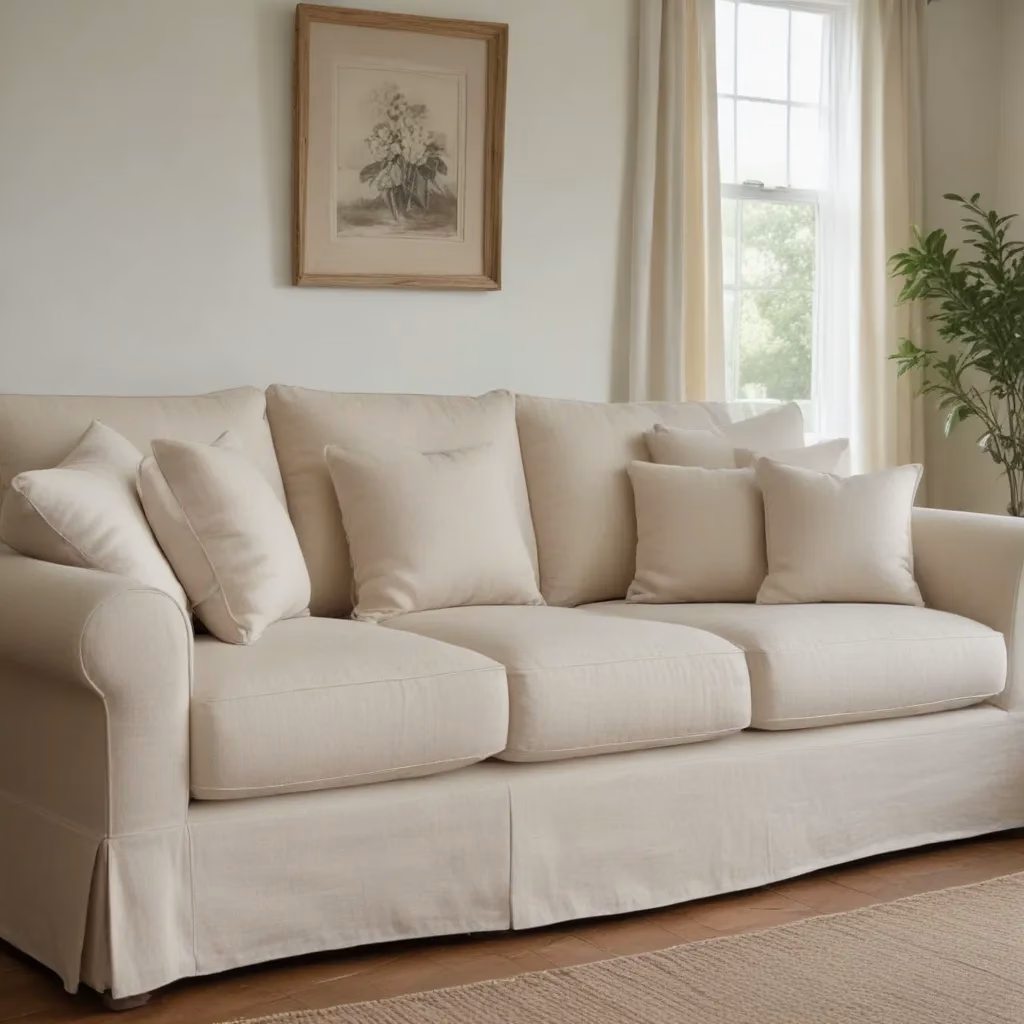
Understanding Your Sofa Needs
When it comes to selecting the ideal sofa for your home, it’s essential to start by assessing your specific requirements. As a furniture specialist with years of experience, I’ve guided countless homeowners through this process, and I can tell you that taking the time to reflect on your needs will pay dividends in the long run.
First, consider the primary function of your sofa. Will it be the centerpiece of a formal living room, or is it destined for a cozy family den where movie nights and lazy Sundays are the norm? The intended use will significantly influence your choice of style, material, and durability requirements.
Next, think about the size of your space. A common mistake I see is people falling in love with a sofa that’s too large for their room, leaving it feeling cramped and uncomfortable. Measure your space carefully, and don’t forget to account for traffic flow around the sofa. Remember, you’ll need at least 18 inches of clearance for comfortable movement.
Lastly, consider your lifestyle. Do you have pets or young children? If so, you’ll want to prioritize durability and ease of cleaning. Are you someone who loves to redecorate frequently? Then a neutral, versatile sofa might be your best bet. By taking these factors into account, you’ll be well on your way to finding a sofa that not only looks great but also fits seamlessly into your life.
Sofa Styles and Their Suitability
When it comes to sofa styles, the options can seem endless. Let’s break down some of the most popular choices and discuss which might work best for different home settings and personal preferences.
The classic Chesterfield sofa, with its distinctive deep-buttoned upholstery and rolled arms, brings a touch of timeless elegance to any space. I often recommend this style for formal living rooms or studies where you want to create an air of sophistication. However, keep in mind that the deep buttons can collect dust, so regular cleaning is a must.
For those seeking comfort above all else, a sectional sofa might be the way to go. These versatile pieces can be configured to fit your space perfectly and offer ample seating for large families or frequent entertainers. I’ve found that sectionals work particularly well in open-plan living areas, where they can help define the seating area within a larger space.
If you’re working with a smaller room, consider a loveseat or a compact two-seater sofa. These smaller options can provide the comfort of a full-sized sofa without overwhelming your space. Pair them with an armchair or ottoman for additional seating when needed.
For those who appreciate clean lines and minimalist design, a mid-century modern sofa could be an excellent choice. These sofas typically feature tapered legs and simple, streamlined shapes that can add a touch of retro chic to your decor. They’re particularly well-suited to contemporary interiors or as a statement piece in a more eclectic setting.
Upholstery Materials: Pros and Cons
Choosing the right upholstery material for your sofa is crucial for both aesthetics and longevity. Let’s examine some popular options and their respective advantages and disadvantages.
Leather is a classic choice that many homeowners gravitate towards. It’s durable, easy to clean, and develops a beautiful patina over time. However, leather can be cold to the touch initially and may not be the best choice for those with pets, as claws can easily scratch the surface. If you do opt for leather, consider a protected or pigmented variety for added durability.
Fabric upholstery offers a wide range of textures and patterns, allowing for greater customization of your space. Cotton and linen blends are popular choices for their breathability and comfort. However, they can be more challenging to clean and may show wear more quickly than other materials. If you’re set on fabric, look for options treated with stain-resistant finishes for added protection.
Microfiber is an excellent choice for families with children or pets. It’s incredibly durable, stain-resistant, and easy to clean. The downside? It can sometimes look less formal than other options and may not be suitable for more elegant spaces.
For those concerned about sustainability, consider natural or recycled fabrics. These eco-friendly options have come a long way in recent years and can provide both style and peace of mind. Just be aware that they may require special care to maintain their appearance over time.
Here’s a quick comparison table of common upholstery materials:
| Material | Durability | Ease of Cleaning | Comfort | Cost |
|---|---|---|---|---|
| Leather | High | High | Medium | High |
| Cotton | Medium | Medium | High | Medium |
| Linen | Low | Low | High | Medium |
| Microfiber | High | High | Medium | Low |
| Wool | High | Medium | High | High |
Remember, the best choice will depend on your specific needs and preferences. Don’t hesitate to request fabric samples to test in your home before making a final decision.
Sofa Construction and Quality Indicators
As a furniture specialist, I can’t stress enough the importance of understanding sofa construction when making your purchase. A well-made sofa can last for decades, while a poorly constructed one might need replacement in just a few years.
Let’s start with the frame. A high-quality sofa frame should be made from kiln-dried hardwood, such as oak, ash, or beech. These woods are less likely to warp or crack over time. Avoid sofas with frames made from particleboard or MDF, as these materials are not as durable and can break down quickly, especially in high-use areas.
Next, consider the suspension system. Eight-way hand-tied springs are often touted as the gold standard in sofa construction. This method provides excellent support and helps maintain the sofa’s shape over time. However, it’s also one of the most expensive options. Sinuous springs (S-shaped springs stretched across the frame) can also provide good support at a lower cost point.
The cushion filling is another crucial factor. High-density foam is a popular choice for its durability and comfort. Look for cushions with a density of 1.8 pounds or higher for the best longevity. For a softer feel, you might prefer down-filled cushions, but be aware that these require regular fluffing to maintain their shape.
When examining a sofa, pay attention to the joinery. Quality sofas will have joints that are glued, doweled, and screwed. Avoid sofas that rely solely on staples, nails, or glue for their structural integrity.
Lastly, don’t forget to check the upholstery. Well-made sofas will have patterns that match at the seams and fabric that’s pulled taut without any wrinkles or loose threads. These details are often indicators of overall quality and attention to detail in the manufacturing process.
Measuring for Your New Sofa
One of the most common mistakes I see in my work is people purchasing sofas that simply don’t fit their space properly. To avoid this, careful measuring is essential. Here’s my step-by-step guide to ensuring your new sofa will fit perfectly in your home.
Start by measuring the space where you plan to place the sofa. Measure the length and width of the area, and don’t forget to account for any architectural features like radiators, windows, or fireplaces that might impact placement.
Next, measure your doorways, hallways, and stairwells. You’ll need to ensure that the sofa can actually make it into your home and to its final destination. Remember to measure the diagonal opening of your doorways, as this can sometimes allow for a larger sofa to fit through.
When looking at sofas, pay attention to not just the overall dimensions, but also the height of the back and the depth of the seat. These measurements will impact both the look of the sofa in your space and how comfortable it is to sit on.
If you’re considering a reclining sofa or one with a chaise, be sure to measure with these features extended. You’ll need to ensure you have enough clearance for them to function properly.
For oddly shaped rooms or tight spaces, I often recommend creating a paper template of the sofa’s footprint. This can be laid out on your floor to give you a visual representation of how much space the sofa will occupy.
Remember, it’s not just about whether the sofa will fit, but also how it will look in proportion to your other furniture and the room as a whole. A sofa that technically fits but overwhelms the space won’t create the comfortable, inviting atmosphere you’re likely aiming for.
Color and Pattern Selection
Choosing the right color and pattern for your sofa can dramatically impact the overall look and feel of your room. As someone who’s helped countless clients make this decision, I can tell you it’s often one of the most challenging aspects of sofa selection.
When it comes to color, consider the longevity of your choice. While that bright yellow sofa might seem appealing now, will you still love it in five years? Neutral colors like beige, gray, or navy tend to have more staying power and can easily be updated with colorful throw pillows or blankets as your tastes change.
That being said, don’t be afraid of color if it truly speaks to you. A richly colored sofa can serve as a beautiful focal point in an otherwise neutral room. Just be prepared to design the rest of your space around it.
Patterns can add visual interest and help hide wear and tear, but they can also be limiting when it comes to future redecorating. If you do opt for a patterned sofa, consider how it will work with other patterns in your space. As a general rule, mix patterns of different scales – for example, a large floral print on the sofa could be complemented by smaller geometric patterns on accent chairs or curtains.
For those who love to change up their decor frequently, consider a sofa with removable, washable slipcovers. This allows you to switch up your look seasonally or as trends change, without investing in an entirely new piece of furniture.
Remember, lighting can significantly impact how colors appear. Always request fabric samples and view them in your space at different times of day before making a final decision. What looks perfect in the showroom might appear quite different under your home’s lighting.
Budgeting for Your Sofa Purchase
When it comes to budgeting for a sofa, it’s important to remember that this is an investment piece. A high-quality sofa can last for decades, making it worth allocating a significant portion of your furniture budget to this purchase.
In my experience, you can expect to spend anywhere from $1,000 to $3,000 for a good quality sofa from a reputable manufacturer. Of course, prices can go much higher for luxury brands or custom pieces. While it might be tempting to opt for a cheaper option, keep in mind that a $500 sofa is likely to wear out much faster, potentially costing you more in the long run.
When setting your budget, consider not just the initial purchase price, but also any additional costs. These might include delivery fees, assembly charges, or the cost of special cleaning products for certain upholstery types.
If you’re working with a tight budget, consider shopping during sales periods. Many furniture stores offer significant discounts during holiday weekends or at the end of seasons. You might also find good deals on floor models or last year’s styles.
Another option is to look for quality second-hand sofas. With proper inspection, you can often find high-end pieces at a fraction of their original cost. Just be sure to thoroughly clean any used upholstered furniture before bringing it into your home.
Remember, financing options are often available for larger purchases like sofas. If you decide to go this route, be sure to factor in any interest charges when considering the total cost of your sofa.
Ultimately, the right budget for your sofa will depend on your individual circumstances. However, I always advise my clients to buy the best quality they can afford. A well-made sofa will provide comfort and style for years to come, making it a worthwhile investment in your home.
Caring for Your New Sofa
Once you’ve selected and purchased your perfect sofa, proper care is essential to ensure it remains beautiful and comfortable for years to come. As someone who’s seen the effects of both good and poor sofa maintenance, I can’t stress enough how important this aspect is.
Regular vacuuming is crucial for all types of sofas. Use the upholstery attachment of your vacuum cleaner to remove dust and debris from the surface and crevices of your sofa at least once a week. For leather sofas, follow up with a soft, dry cloth to remove any remaining dust.
For fabric sofas, address spills immediately to prevent staining. Blot (don’t rub) the spill with a clean, white cloth to absorb as much liquid as possible. For water-based spills on most fabrics, a mixture of mild soap and warm water can be effective. However, always check the manufacturer’s cleaning instructions first, as some fabrics may require special care or professional cleaning.
Leather sofas should be cleaned with products specifically designed for leather care. Avoid using water or household cleaners, as these can damage the leather. Apply a leather conditioner every 6-12 months to keep the leather supple and prevent cracking.
Protect your sofa from direct sunlight, which can cause fading and, in the case of leather, drying and cracking. Use blinds or curtains to filter harsh sunlight, or consider moving your sofa to a less sun-exposed area of the room.
Rotate cushions regularly to ensure even wear. This is particularly important for sofas with removable cushions. If your sofa has attached cushions, consider rotating the whole sofa periodically if possible.
For sofas with removable covers, follow the care label instructions carefully when washing. Some may be machine washable, while others might require dry cleaning. Even if machine washing is allowed, air drying is often recommended to prevent shrinkage.
Lastly, consider using arm covers or throws on areas that receive the most wear, such as armrests and headrests. These can be easily washed or replaced, extending the life of your sofa’s upholstery.
Remember, a little regular maintenance goes a long way in preserving the beauty and comfort of your sofa. By following these care tips, you can enjoy your new furniture piece for many years to come.
Making the Final Decision
After considering all the factors we’ve discussed – style, size, material, construction, color, and budget – you’re finally ready to make your decision. This can feel like a daunting moment, but with the right approach, you can feel confident in your choice.
First, narrow down your options to two or three sofas that meet your criteria. Then, if possible, visit a showroom to see and sit on these sofas in person. There’s simply no substitute for experiencing the comfort and seeing the true colors and textures firsthand.
When you’re in the showroom, take your time. Sit on each sofa for at least 10-15 minutes. Try different positions – sitting upright, lounging, lying down if that’s how you’ll use it. Bring along anyone else who will be using the sofa regularly to get their input as well.
Don’t be afraid to ask questions. A good salesperson should be able to provide detailed information about the sofa’s construction, materials, and care requirements. If they can’t answer your questions, that might be a red flag.
Consider requesting fabric samples to take home. This will allow you to see how the colors and textures look in your specific lighting and alongside your other furnishings.
Before making your final decision, review the warranty and return policy. A quality sofa should come with a robust warranty, typically covering the frame for 10-15 years and the cushions for 3-5 years.
Lastly, trust your instincts. If a particular sofa feels right and meets your needs, it’s likely a good choice. Remember, this is a piece of furniture you’ll be living with for many years, so it’s worth taking the time to find one that truly fits your lifestyle and tastes.
For more expert advice on furniture selection and care, don’t hesitate to visit Sofa Spectacular. We’re always here to help you create the perfect living space.
In conclusion, buying a sofa is a significant decision, but armed with the right knowledge, you can approach it with confidence. Take your time, do your research, and soon you’ll be relaxing on the perfect sofa for your home.



